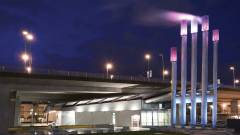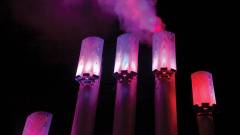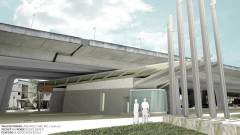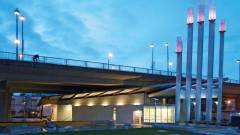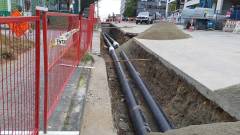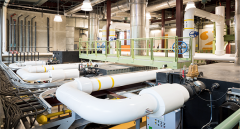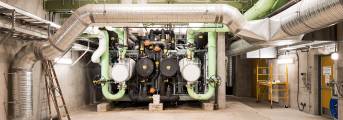Client: City of Vancouver
Year: 2004 to Present
Project Highlights
- 5,750,000 sq ft floor area serviced by the False Creek NEU in 2019. At full system build-out, 22,600,000 sq.ft. of floor area is expected to be serviced.
- 3,500 tonnes of C02 saved: Its the equivalent of taking 928 cars off the road in 2017.
- The Energy Centre was designed to showcase the innovative use of sustainable technology. The building that houses the utility infrastructure has a certified LEED Gold rating.
- 50,000 megawatt hours (MWh) total energy produced by the utility in 2019.
- 34 buildings connected to the utility in 2019.
- 6 km total length of distribution system pipe (DPS) in 2019.
- 4,920 residential suites connected to the NEU in 2019.
North America’s First District Sewage Heat Recovery System
FVB worked with the City of Vancouver on the design and implementation of their Neighborhood Energy Utility (NEU) in Southeast False Creek (SEFC). The NEU successfully served the 2010 Olympic Village in SEFC with hot water. The Energy Centre’s primary source of heat is a two-stage sewage heat pump, and is the first of its kind in Canada. FVB played a key role in specifying the 2.7 MW sewage heat pump, supporting the City in its procurement, reviewing and providing technical input into plant design.
FVB has been involved with SEFC since its conception, starting with the conceptual District Energy Study in 2005. Potential energy sources included biomass, CHP, geo-exchange and waste heat (sewer, substation, ice rink, steam plant, etc.). Various system configurations and interfaces with the nearby existing large central steam plant were investigated. Following the approved study, FVB successfully completed detailed design of the temporary heating facility, distribution piping and building transfer stations during the initial build out in 2006, and subsequently the system expansions in 2010 and 2020. FVB also acted as Owner’s Engineer for the central heating production plant and designed connections to 21 buildings and over 2,700 trench meters of piping.
The base load energy for the low temperature hot water district heating system is recovered from raw sewage using a 2.7 MWt heat pump, which provides approximately 70% of the total thermal demand. The remaining demand is made up from high efficiency natural gas boilers and solar thermal modules.
At the time it was developed sewer heat recovery was a relatively new and high-risk technology in Canada. This technology was chosen as a result of extensive study. FVB’s experience with this project was a major contributor to ongoing experience with novel heat-pump use in Canada, which continues to this day.
FVB Energy continues to support the NEU in its growth and connection of new customer buildings.
More Information
Visit City of Vancouver
Keywords
Owner’s Engineer, Wastewater Energy Transfer System, System Profile, Decarbonization









